Film
A film, also known as a movie or motion picture,[a] is a work of visual art that simulates experiences and otherwise communicates ideas, stories, perceptions, emotions, or atmosphere through the use of moving images that are generally, since the 1930s, synchronized with sound and (less commonly) other sensory stimulations.[1] The word "cinema" is borrowed from the French cinéma, an abbreviation of cinématographe (term coined by the Lumière brothers in the 1890s), from Ancient Greek meaning "recording movement".Before the introduction of digital production, a series of still images were recorded on a strip of chemically sensitized celluloid (photographic film stock), usually at a rate of 24 frames per second.The images are transmitted through a movie projector at the same rate as they were recorded, with a Geneva drive ensuring that each frame remains still during its short projection time.An analogous optical soundtrack (a graphic recording of the spoken words, music, and other sounds) runs along a portion of the film exclusively reserved for it, and was not projected.The name "film" originally referred to the thin layer of photochemical emulsion[2] on the celluloid strip that used to be the actual medium for recording and displaying motion pictures.[4] In 1886, Anschütz developed the Electrotachyscope, an early device that displayed short motion picture loops with 24 glass plate photographs on a 1.5 meter wide rotating wheel that was hand-cranked to a speed of circa 30 frames per second.He created several movies for the machine by painting images on hundreds of gelatin plates that were mounted into cardboard frames and attached to a cloth band.However, in the 1920s, European filmmakers such as Eisenstein, F. W. Murnau and Fritz Lang, in many ways inspired by the meteoric wartime progress of film through Griffith, along with the contributions of Charles Chaplin, Buster Keaton and others, quickly caught up with American film-making and continued to further advance the medium.The Vitaphone system, produced alongside Bell Telephone Company and Western Electric, faced initial resistance due to expensive equipping costs, but sound in cinema gained acceptance with movies like Don Juan (1926) and The Jazz Singer (1927).[10] Today, the future of sound in film remains uncertain, with potential influences from artificial intelligence, remastered audio, and personal viewing experiences shaping its development.[citation needed] In an attempt to lure audiences back into theaters, bigger screens were installed, widescreen processes, polarized 3D projection, and stereophonic sound were introduced, and more films were made in color, which soon became the rule rather than the exception.On the other hand, critics from the analytical philosophy tradition, influenced by Wittgenstein, try to clarify misconceptions used in theoretical studies and produce analysis of a film's vocabulary and its link to a form of life.This technique can be used to convey a narrative or to create an emotional or intellectual effect by juxtaposing different shots, often for the purpose of condensing time, space, or information.Eisenstein's film Battleship Potemkin (1925) is a prime example of the innovative use of montage, where he employed complex juxtapositions of images to create a visceral impact on the audience.[23] As the art of montage evolved, filmmakers began incorporating musical and visual counterpoint to create a more dynamic and engaging experience for the viewer.The development of scene construction through mise-en-scène, editing, and special effects led to more sophisticated techniques that can be compared to those utilized in opera and ballet.As the medium of film continues to evolve, montage remains an integral aspect of visual storytelling, with filmmakers finding new and innovative ways to employ this powerful technique.Upon seeing how successful their new invention, and its product, was in their native France, the Lumières quickly set about touring the Continent to exhibit the first films privately to royalty and publicly to the masses.Dedicated theaters and companies formed specifically to produce and distribute films, while motion picture actors became major celebrities and commanded huge fees for their performances.The rise of alternative home entertainment has raised questions about the future of the cinema industry, and Hollywood employment has become less reliable, particularly for medium and low-budget films.At its core, the means to produce a film depend on the content the filmmaker wishes to show, and the apparatus for displaying it: the zoetrope merely requires a series of images on a strip of paper.The crew interacts with but is also distinct from the production staff, consisting of producers, managers, company representatives, their assistants, and those whose primary responsibility falls in pre-production or post-production phases, such as screenwriters and film editors.Other than acting, the crew handles everything in the photography phase: props and costumes, shooting, sound, electrics (i.e., lights), sets, and production special effects.Cellulose nitrate was the first type of film base used to record motion pictures, but due to its flammability was eventually replaced by safer materials.Some studios save color films through the use of separation masters: three B&W negatives each exposed through red, green, or blue filters (essentially a reverse of the Technicolor process).But the advent of consumer camcorders in 1985, and more importantly, the arrival of high-resolution digital video in the early 1990s, have lowered the technology barrier to film production significantly.Technologies such as DVDs, FireWire connections and a wide variety of professional and consumer-grade video editing software make film-making relatively affordable.This method was pioneered by UPA and popularized by Hanna-Barbera in the United States, and by Osamu Tezuka in Japan, and adapted by other studios as cartoons moved from movie theaters to television.Camera-less animation, made famous by film-makers like Norman McLaren, Len Lye, and Stan Brakhage, is painted and drawn directly onto pieces of film, and then run through a projector.
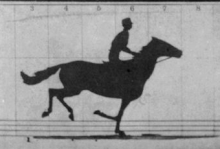


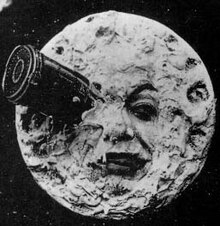
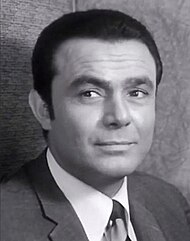
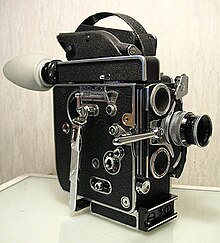



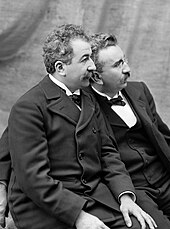

Film (disambiguation)Movie (disambiguation)Moving picture (disambiguation)Motion picture (disambiguation)Photoplay (disambiguation)A Trip to the MoonFilmmakingStep outlineFilm treatmentScriptmentScreenplayFilm financeFilm budgetingGreen-lightPre-productionBreaking down the scriptScript breakdownStoryboardProduction boardProduction stripDay Out of DaysProduction scheduleOne liner scheduleShooting scheduleCinematographyPrincipal photographyVideographyShooting scriptFilm inventory reportDaily call sheetProduction reportDaily production reportDaily progress reportDaily editor logSound reportPost-productionFilm editingRe-recordingSync soundSoundtrackSpecial effectsvisualNegative costDistributionFilm releaselimiteddelayedRoadshowFilm historyFilmographyGuerrilla filmmakingGlossaryFilm crewScreenwritingSpec scriptvisual artsynchronized with soundthe Lumière brothersAncient Greekmovie theaterfilm industryphotographingmotion-picture cameraanimationcomputer animationvisual effectsphotographic filmframesmovie projectorGeneva drivestroboscopicflicker fusionscreenoptical soundtrackrecordingsoundsfully digitalmediumEuropeHistory of film technologyHistory of filmPrecursors of filmHistory of animationstorytellingliteraturetheatrevisual artsentertainmentshadowgraphycamera obscurashadow puppetrymagic lanternphantasmagoriasuperimpositiondissolving viewsphénakisticopezoetropeflip bookpraxinoscopeJules DuboscqPhotographyphotographic emulsionsexposuresJoseph PlateauCharles WheatstoneThe Horse in Motioninstantaneous photographyEadweard Muybridgecabinet cardsÉtienne-Jules MareyOttomar AnschützchronophotographyzoopraxiscopeAnschützelectrotachyscopeinstantaneous photographsshutterMuybridgeSiemens & HalskeChicago World's FairPauvre PierrotÉmile ReynaudSociété française de photographieThéâtre OptiqueRoundhay Garden SceneLouis Le Prince